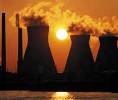
Britain Announces Sites for Eight New Nuclear Power Plants
UK Chief Inspector of Nuclear Installations Mike Weightman filed an interim report last month, telling the British government there is no need to curtail operations at the country’s nuclear power plants in light of the Japanese crisis at the Fukushima plant.
Britain’s government has initiated plans to build eight new nuclear power plants throughout the country. This is the country’s first major announcement on the direction it is taking nuclear power since the Fukushima disaster in Japan.
UK Chief Inspector of Nuclear Installations Mike Weightman filed an interim report last month, telling the British government there is no need to curtail operations at the country’s nuclear power plants in light of the Japanese crisis at the Fukushima plant. He did list 25 recommended areas for review to improve safety of the British industry, however, including reviews of emergency response plans, how the plants would handle a prolonged loss of power—many UK plants are scheduled to be decommissioned within the next decade, so the question may be moot—and the risks of flooding.
According to the Guardian, the British government has given its backing to new reactors as a way of helping meet the country’s energy demands and cutting carbon dioxide emissions.
This announcement came days after German Chancellor Angela Merkel decided to decommission all of the country’s nuclear power plants by 2022. Seven of those stations have been off-grid since Merkel announced a “three-month moratorium” following the Fukushima disaster.
Merkel said 2022 was “the right space of time” to set as a goal for Germany’s complete withdrawal from nuclear power.
Meanwhile, United States Nuclear Regulatory Commission Chairman Gregory Jaczko spoke Tuesday at the IAEA Ministerial Conference in Vienna about the status of nuclear plants in the United States. He said NRC is more than two-thirds through a 90-day review of the Fukushima accident to see if there are issues to address in the short term.
“While it is my opinion that U.S. nuclear plants are safe, the early work suggests that there a number of possible areas for improvement,” Jaczko said. “Several of us on the commission have noted that our regulations for what is called a station blackout—essentially what happened in Fukushima—do not take into account an extended loss of AC power. Other areas that have drawn attention are spent fuel pools, emergency planning, of course seismic issues, contingency planning for situations beyond the design basis of a plant, and others.
“The NRC has also run some preliminary inspections on areas like coping with unanticipated disasters, station blackout preparations, and severe accident mitigation. Again, while I see nothing that calls into question the safety of our plants, I see areas where performance was not as good as would be preferred.”
Jaczko said it is likely that NRC will need to make some changes regarding safety at U.S. nuclear plants, but it is too early to tell what those changes will be.
For more information on the eight sites in Britain, click here.